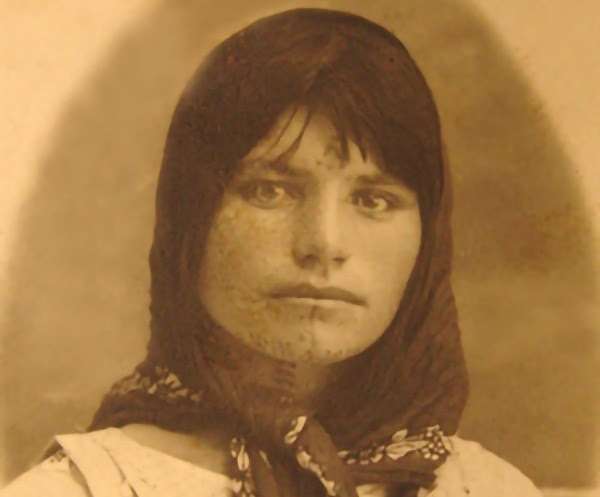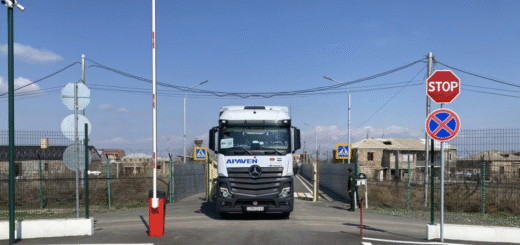Women and Girls Forced to Convert to Islam

By Nurnisa Erismis, Denizli, Turkey,
Keghart
Abstract: This article examines the experiences of Armenian women and girls forcibly converted to Islam during the 1915 genocide, focusing on identity erasure, bodily control, and feminist resistance. Drawing on historical accounts, survivor testimonies, and diaspora studies, it highlights the systematic use of coercion and physical markings as tools of domination, and explores the strategies women employed to preserve autonomy and cultural memory.
Introduction: The Armenian Genocide of 1915 was not only a tragedy of mass death and displacement but also an assault on the social and cultural identity of women. Reports and historical accounts reveal that thousands of women and girls were forcibly converted to Islam, abducted, or tattooed to erase their Armenian identity. The process of Islamization, often accompanied by forced marriage and physical marking, represents a deliberate attempt to control and redefine female bodies.
Dorian Jones’ article in Voice of America, “Growing Numbers of Turks Discover Armenian Ancestry,” notes that learning about Armenian ancestry remains a profound cultural shock. The article situates this phenomenon within a broader context of historical trauma and collective memory, underscoring the importance of feminist historical analysis.
Historical Context: Medz Yeghern and Forced Islamization The Ottoman Turkish state’s campaign to rid itself of the Armenian population involved various strategies, all of which were selective in terms of gender and sensitive to age. The goal was to eliminate Armenian identity and prevent its future reproduction, and this goal did not necessarily require the mass killing of everyone perceived as Armenian; what was needed was only the elimination of those capable of transmitting Armenian identity to future generations. Therefore, although not universal, the general trend in the first phase of the process was the killing of adult males. Those who did not have the potential to pass on the Armenian ethno-religious identity to future generations could be spared, and even exploited. Indeed, the seizure of women’s bodies and young girls and boys and their incorporation into the Muslim population was a result of this approach. This strategy, used in many other demographic engineering projects, not only mitigated the effects of population loss resulting from war, exile, and massacres but also played a role in encouraging mass participation in deportations and massacres. “War booty” included not only the looting of Armenian property but also largely unrestricted access to women and children (Ekmekcioglu, 2013).
During Medz Yeghern (the Great Calamity), survival for Armenian women often required compliance with coercive measures imposed by perpetrators. Forced conversion to Islam and adoption into Turkish or Kurdish households were not acts of voluntary faith but mechanisms to sever ties with cultural and familial roots. Women who survived physically frequently lost their cultural and social identities, becoming isolated and alienated individuals.
Tattooing of women, often on the face or hands, served as both a symbol of ownership and a tool for erasing identity. In Kurdish culture, tattoos—known as deq—predate Islam and traditionally signify tribal affiliation, beauty, or protection from the evil eye. During the genocide, however, tattoos were used as instruments of control and cultural erasure, marking women as property and obstructing reintegration into Armenian society.
Bodily Control and Identity Erasure Tattoos and forced conversion exemplify how the body became a central site of power. Perpetrators used these practices to assert dominance and ownership, while the Armenian community and international volunteers sought to document the violence and facilitate survivors’ reintegration. Nonetheless, physical markings limited women’s social positions, complicating their sense of belonging and identity reconstruction.
Feminist analysis underscores the significance of these practices. They were not mere cultural expressions but deliberate strategies to suppress female autonomy, erase ethnic identity, and reinforce patriarchal hierarchies. Survivors’ strategies—concealing identities, secret communication with families, and forming support networks—reflect both individual resilience and collective resistance.
Survivor Testimonies and Diaspora Studies Articles in Keghart Magazine, such as “Let’s Welcome Islamicized Armenians” and “Islamized Armenians Discover Their Roots,” report that tens of thousands of Armenian orphans were forcibly converted and exploited as slaves, servants, or wives. Alice Aliye Alt’s testimony highlights the historical experience of Hamshen Armenians, who were forced to adopt Islam and whose identities are being rediscovered today. These narratives illustrate processes of identity erasure, forced assimilation, and the ongoing struggle for cultural memory preservation.
Rescue Missions and Reintegration Challenges Post-World War I rescue missions provided shelter for many survivors in orphanages established by missionaries and volunteers. Despite these efforts, tattoos continued to impede full reintegration into Armenian society. Women’s stories exemplify the persistent effects of genocide on bodily autonomy and social belonging, illustrating the profound consequences of cultural and gender-based violence.
Feminist Implications From a feminist perspective, the experiences of Armenian women during the genocide reveal the intersection of gender, culture, and power. The use of the body as a site of control, and women’s resistance strategies highlight the resilience and agency exercised even under extreme oppression. These histories underscore the necessity of incorporating gendered analyses into studies of mass violence, identity, and human rights.
Conclusion The forced conversion, abduction, and tattooing of Armenian women and girls during the 1915 genocide constitute a critical lens for understanding gendered violence and identity erasure. These experiences have enduring relevance for contemporary debates on women’s rights, gender equality, and human rights advocacy. Honouring survivors’ memories and analyzing the historical control over women’s bodies are essential steps in addressing past injustices and informing present and future struggles for justice.
Suggested References / Footnotes
- L. Ekmekcioglu. “Kidnapping Girls, Rescuing Girls: During World War I and the Armistice Years in Istanbul, Armenian and Muslim Women.” Journal/Publisher, 2013.
- Jones, Dorian. “The Number of Turks Discovering Their Armenian Heritage Is Increasing.” Voice of America, 2015.
- Keghart Magazine. “Let’s Welcome Islamicized Armenians.” 2015.
- Keghart Magazine. “Islamized Armenians Discover Their Roots.” 2015.
- Alt, Alice Aliye. Testimonies on Hamshen Armenians and forced conversion. Keghart Magazine.
- Dadrian, Vahakn N. The History of the Armenian Genocide: Ethnic Conflict from the Balkans to Anatolia to the Caucasus. Berghahn Books, 1995.
- Suny, Ronald Grigor. They Can Live in the Desert but Nowhere Else: A History of the Armenian Genocide. Princeton University Press, 2015.
Vartanuş-Hangul’s Testimony

“My name is Hangul. I am from Diyarbakir, a leftist and an atheist. My grandfather, Huseyin, from the Zirki tribe, was known in Lice and Hazro for killing Armenians. He was guilty and responsible for those crimes. He murdered the Armenian husband of my grandmother, seized all his property, and forced her to become a Muslim and a Kurd. My grandmother’s name was Vartanuş; mine is Hangül; both names mean the same thing. Throughout her life, she was never happy, and she never loved the man who took her as his second wife.
Today, if you ask me, I feel loyalty not to my Kurdish grandfather, but to my Armenian grandmother.”
One hundred years ago, there was no ISIS, but there were Kurdish Hamidiye regiments. What ISIS did to the Kurds, the Hamidiye did to the Armenians.
The image and the quotation together reveal the layered trauma and inherited conscience that the article tries to address — not to provoke, but to remember responsibly.
Today, Hangul still lives in Diyarbakir, trying to keep alive the memory of her grandmother Vartanuş a living testament to the unbroken chain of remembrance that this article seeks to honour.
*****

Born in Kars with maternal roots in Yerevan, Nurnisa Erismis now resides in Denizli, Turkey. She is a retired health manager with a degree in sociology. Inspired by the life story of her paternal grandmother, she has dedicated herself to feminism and human rights. She has been active in politics, defending equality among peoples and justice, and opposing racism and xenophobia. She has also been engaged in issues of memory, justice, and reconciliation in Turkey and the Armenian diaspora, with a particular focus on the Armenian Genocide.





